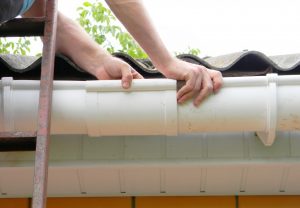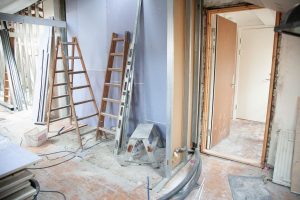When you decide to build a house, you first must buy a piece of land. While that probably sounds simple, a lot goes into choosing the land you purchase. In this article, we consider the many considerations and decisions to make before purchasing your plot of land. ;
City, Town, or Unincorporated Area?

First, choose whether you want to reside in the city, suburbs, a town, or an unincorporated area. The latter may not be a familiar term to many people. It refers to an area outside of city or town limits that may use a place name but has not undergone the formal process of establishing itself as a municipality. Place names appear on maps and in GPS data, but they don’t have a formal system of local government or municipal services.
Choosing a city, its suburbs, or a town means you will have local government and municipal services, such as water, trash service, police, and fire department. Choosing an unincorporated area, typically a rural area, means you will need to provide yourself with the typical amenities of municipal services. In some areas, that means purchasing large tanks to store water, hiring a private trash service, and phoning a county sheriff to report any crimes.
Perhaps the biggest difference in urban vs. rural life comes from how each handles sewage. In urban areas, each home receives sewer lines that connect to a waste transportation main that whisks your home’s raw sewage to a municipal sewage treatment plant. At this plant, it undergoes treatment with chemicals that remove the most dangerous parts of the feces, killing bacteria.
In a rural, unincorporated area, each homeowner has a construction crew dig a cistern, which receives a liner and tank in it to protect the groundwater from the feces that flow from the toilet through a sewage line and into the septic tank. The homeowner must hire a septic pumping service every two years to remove the waste from the septic tank. This process ensures that the tank always provides appropriate space for waste collection. A composting toilet provides the only other viable alternative in these rural areas.
Shopping for Land
Shopping for a piece of land differs from shopping for anything else. Land undergoes a process at the local government level known as zoning. Essentially, land can carry zoning for residential, commercial, or industrial use. If you want to build a house on a piece of land that’s zoned for commercial use, you must own the land and apply for re-zoning or a variance. Which you need depends on your municipality.
Many areas create complex zoning ordinances that stipulate a variety of uses within one of the three main categories. For example, in Beverly Hills, CA, some residential land carries zoning that precludes building on it. That forces a landowner to use the land as a land barrier or open space. Some areas of the city allow one home on a plot of land of 4,000 square feet, but some of the plots of land only contain 2,000 square feet. Although zoned residential, a landowner cannot build a home on these small lots, which the city platted to protect the neighborhoods from overdevelopment.
Although it might seem like you would only need a real estate agent if shopping for a finished home, many Realtors specialize in raw land sales. Raw land refers to an un-cleared plat that has had no building or improvements to it. Hiring the services of a real estate professional can speed up your shopping progress and help you find a piece of land suitable for your needs. Once you purchase your land, the real fun starts.
Verify Perimeters

Now that you own a piece of land, verify its perimeters. Many lots come staked with the corners noted with wood stakes topped by pink ribbons marking the corners. Other lots use rebar to mark the corners. Either way, have a professional surveyor verify the land measurements and delineate the borders of your yard with stakes and string.
Contact a local fence company to obtain estimates on installing a wood, rock, stone, or resin fence to add security, privacy, and beauty to your land. You may want to wait until you complete your home construction to have the fence installed, so it doesn’t undergo damage from the many construction crews that build a home.
Check Plumbing Options
Next, check the plumbing options available to you. A piece of land might seem to require septic, but consider a composting toilet if you want to avoid hiring someone for septic tank pumping every two years. A self-contained composting toilet requires no water and composts the feces inside a tank behind the toilet bowl. These toilets look like those that use water except they contain a large tank attached to the rear or underside of the toilet.
Both types of toilets require plumbers to install. Some composting toilets require emptying the compost bin every few weeks, but others do not. Some of these toilets require additives to the bin that help the feces become safe to use compost.
Figure out Heating and Cooling Options

Before you buy a piece of land, consider how you will cool and heat the home. Any home can contain a central heat and air system, regardless of location. Consider what you will use for a backup heat or cooling system. A propane or butane heater offers an easy-to-use option for when the electricity goes out. Have a local service deliver a propane tank or butane tank to your home.
Homes with central heat and air systems need HVAC services to visit at least once per year to maintain the ductwork and HVAC system. Cleaning the ducts and conducting annual maintenance on the system helps it keep running at its best. In some rural homes, installing window cooling units or freestanding air conditioners offers the best option for summer, with a propane or butane heater for winter. Although mini splits prove popular in cities and rural areas, it may prove tough to find a licensed installer for them.
Don’t Forget the Details
When considering a piece of land, think about how you would cook in it, too. Some areas offer few utilities, so a rural home might work best with a wood stove installed to it. This option ensures you can cook and heat the home from a single source.
Wood-burning ovens offer a combination of cooling and heating sources. If you don’t want to add thousands of dollars to your home plans for a fireplace, a wood stove can offer the in-between that lets you enjoy the heat of a fireplace and the convenience of cooking with natural fuel, such as twigs, firewood, and leaves.
Get Ready to Build Your New Home!

When you shop for a piece of land, consider which building options you will have at the location. You may adore the work of custom home builders in your current city, but they may not willingly travel to a rural area or another city to build. In some areas, you may need to construct the home yourself because builders may not travel that far outside of town.
Before you buy any piece of land, research the contractors available in the area. It doesn’t make sense to buy a piece of land only to find out that you can’t get builders to travel to the site. Research the available services before you purchase, so you can make the best financial decision. Sometimes, the beauty of the land does not influence your decision as much as the ease of construction does.
Consider building costs before purchasing your land, too. It may cost less to build in the city or the suburbs because, in a rural area, you would need to pay a travel fee to many contractors to get them to travel there. Building costs in rural areas also include transportation costs to truck materials there.
Once you line up all of the contractors and construction crew, and buy your materials, you’re ready to break ground on your project. Construction of a new home can take only a few months or more than two years, depending on the permitting process, weather, availability of materials, etc. Break ground and build your home.
Get Landscaping in Check
Before you get too excited about a piece of land, you will need to ensure that you can also have it cleared to start the building process. This process includes hiring a tree removal contractor who cuts down trees and pulls out stumps. A land clearing contractor typically clear-cuts everything on the site to create an open expanse for the building.
Although a necessary process, using more judicious clearing methods can result in a better landscape. Consider only eliminating the trees and bushes in the central area of the lot where you plan to build. Have an excavator clear a driveway path, so contractors can reach the building site without problems. By leaving the trees along the edges of your property, you enhance your eventual curb appeal and reduce your later landscaping costs.
Finally, Make Sure Things Are Up to Code
Once you buy a piece of land and build a home on it, you will need to have it undergo a final home inspection before you can move into it. This inspection tests that everything works and that it meets state and local building codes. An urban home must pass inspection before the fire marshal issues a certificate of occupancy.
If the inspection turns up any problems, the homeowner must address these before they can undertake the final walkthrough and take possession of the house. Each building contractor should willingly repair any work they did wrong or that did not meet the code. Once it passes inspection, the builder turns the keys over to you and you take possession of your new home.
Buying Land to Build a Home
What starts as a simple task to buy a piece of land can turn into a massive undertaking if you do not know your way around a city planning office and fail to hire a real estate agent. Saying you want to construct a country house and knowing what that means to the building process mean two different things. The most sedate country home began as raw land that someone had to tame.
Building a home requires patience, especially when looking for the right land. Whether you want a house in the city, suburbs, or a rural area, each has its trade-offs. Although you can more easily find amenities and utilities in the city and urban areas, building there can include considerable delays from awaiting permit approvals. A rural home may not have permit delays, but building in an unincorporated area can create other issues from its lack of building code and permitting. A homeowner must use the state building code in these cases and may lack guidance or help to determine the best option.
Consider access points to the land, both for ease of reaching it for construction purposes and travel to it thereafter. Will you be able to reach your home easily if a local road closes? Does the location offer access besides a land route, such as boating in or flying in? For those constructing a vacation getaway, these options can make a remote location more viable.
Buying a piece of land sounds so simple when you say it. A lot goes into the purchase though, especially research to learn about what type of construction you can legally build on the land. Buying land uses the same process as purchasing a house, minus the inspection. Once you build the home, you will need the inspection to qualify for the fire marshal’s certificate of occupancy.
Hire a Realtor after having determined what you want in a piece of land. Whether it sits on the coast or features a pond, a real estate professional can help you find the land you want. Shop smart and know that a lot perfectly suits your building needs and lifestyle choices. This can help you avoid purchasing a piece of land that you cannot use for the purpose that you want.






